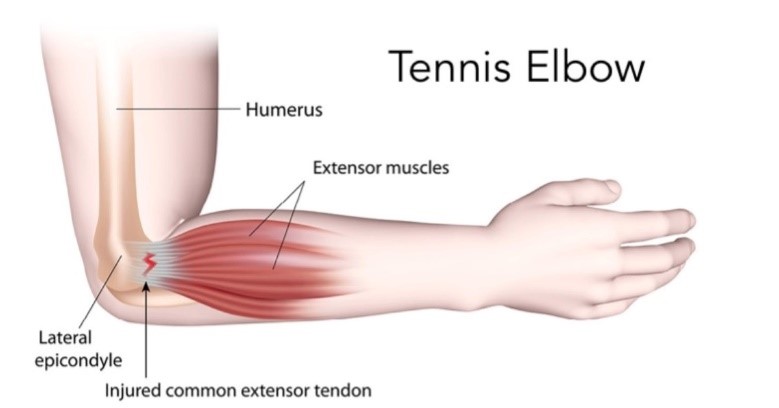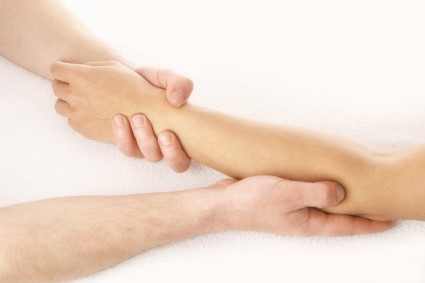What is it?
The layman’s term ‘Tennis elbow’, has more recently been replaced by the term lateral epcondalgia. This describes a range of clinical presentations, where there is pain on the outside of the elbow, typically as a result of repetitive overload. The condition has traditionally been described as overload and pain in the common extensor tendon, which attaches the wrist extensor muscles to the outside of the elbow. This generally occurs as a result of repetitive microtrauma, often resulting in breakdown and weakness of the common extensor tendon.

It is now commonly accepted that the condition does not simply involve pain and weakness of the common extensor tendon. There can be a range of presentations and potential sources of pain with this condition, often involving a contribution from the radial nerve, the superior radio ulnar joint and painful trigger points in the surrounding musculature.
Symptoms
No special tests are required for diagnosis of the condition, a thorough history and physical examination by a physiotherapist, should be sufficient.
Tennis elbow or lateral epicondalgia, will commonly result in;
- Pain on the outside of the elbow with tasks that involve contraction of the muscles of the forearm such as gripping, twisting,lifting, shaking hands and even typing.
- Pain and sensitivity to touch on the outside of the elbow and often in the muscles of the forearm.
- Often movement of the elbow can be pain free even though this is the source of the pain.
- Where there is involvement of the radial nerve,pain may radiate down into the forearm and some weakness in grip strength maybe noted.
Causes
Lateral epcondalgia is essentially a repetitive strain injury from overuse or poor loading of the elbow. There are a wide range of factors which may contribute to the development of tennis elbow including;
- Sudden increase in gripping type activity.
- Weakness of the muscles of the forearm upper armor shoulder stabilizers, resulting in overload to the elbow.
- Poor postures or technique when using the arm,placing undue stress on the elbow.
- Restriction of mobility of the nerves running from the neck and wrapping over the elbow.
Treatment
The initial phase of treatment of this condition involves activity modification to decrease load on the injured tissue. Manual therapy to decrease muscular tension and improve mobility of the joints and nerves is often very helpful in providing relief of symptoms. Various taping techniques may also be used to offload painful structures around the elbow.

The second phase of the treatment involves corrective exercises to address any postural issues or weakness in the upper limb which have contributed to overload. This will be done in conjunction with a program of quite controlled incremental loading to the injured tissue of the elbow. The aim of this phase is to increase strength and load capacity of the elbow and arm generally.
While treatments such as steroid injections can decrease pain levels in the short term, the longer term efficacy of these treatments when not undertaken with corrective exercise is poor.
